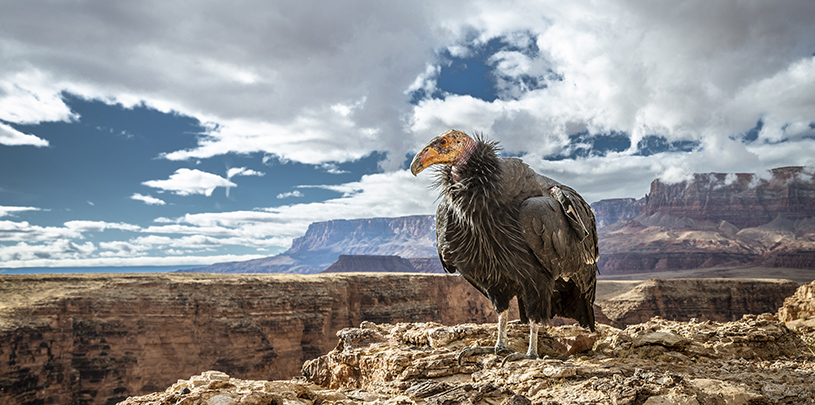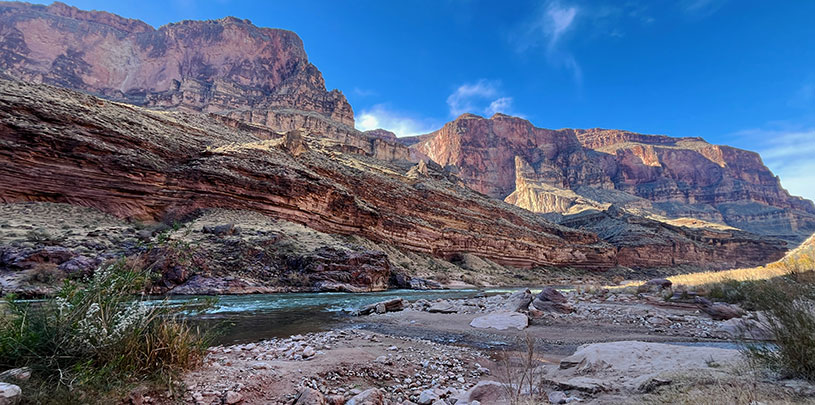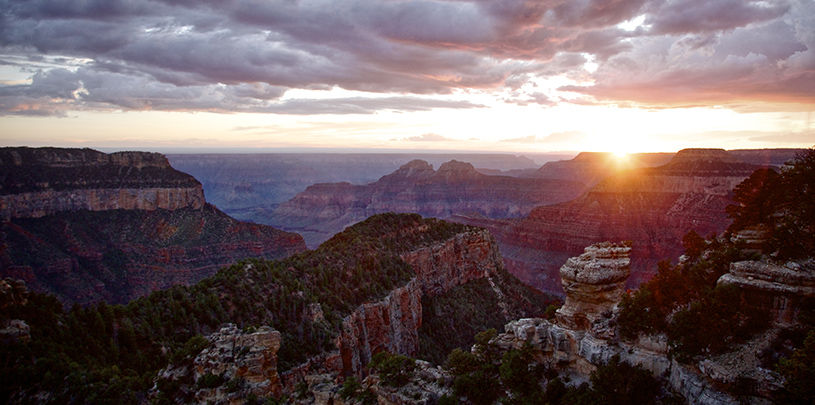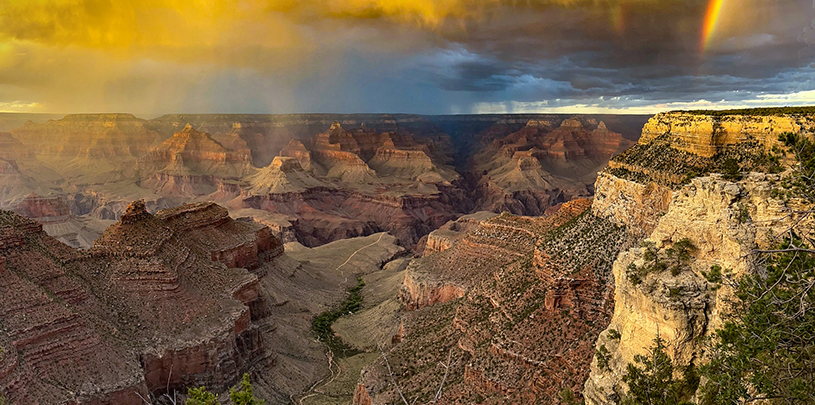
Native American tribes with strong connections to the Grand Canyon region asked President Biden to protect about 1 million acres of their homelands outside Grand Canyon National Park and on August 8, 2023, he did, traveling to the foot of a sacred mountain, Red Butte, to designate Baaj Nwaavjo I’tah Kukveni – Ancestral Footprints of the Grand Canyon National Monument.
Native peoples have lived here, stewarded, and visited these lands since time immemorial, along with a wide array of animals large and small. From majestic bighorn sheep climbing the cliffs, to pronghorn leaping across the valleys, to California condors gliding overhead, from mountain lions and black bears down to the diminutive Houserock Valley chisel-toothed kangaroo rat (which likes to hop on its hind legs), a dazzling array of animal life calls Baaj Nwaavjo I’tah Kukveni – Ancestral Footprints of the Grand Canyon National Monument home.
Here are a few of the creatures you might spy on these monumentally beautiful and culturally important lands.
Endangered California condors

Bighorn sheep

Mule deer

Desert mule deer famously migrate through the monument to reach their summer pastures on the Kaibab Plateau. Some of the largest mule deer bucks in Arizona can be found nibbling their way across the monument.
Mountain lions

These powerful carnivores can weigh up to 150 pounds and stand two to three feet tall at the shoulders, measuring up to 7.5 feet long from nose to tail. Mountain lions hunt primarily at night. If they can’t eat everything they kill, since they can’t pack doggie bags they stash their leftovers instead, covering them under leaves, dirt, and other debris to feed on later. With powerful hind legs they can jump up to 45 feet.
Pronghorn

One of the fastest land animals on Earth, pronghorn can run at speeds of close to 60 miles per hour. Both males and females have short horns, with a short prong that points forward, the source of their common name. They’re often mistakenly called antelope (they’re not). When a pronghorn catches sight of a predator, it raises its white rump hairs to signal danger. Other pronghorn see the white patch and know to be on high alert.
As fast as they can run, pronghorn don’t jump, so fences in their habitat in the monument can cause big problems; building fences that the animals can crawl under without being injured is key.
House Rock Valley chisel-toothed kangaroo rat
The House Rock Valley chisel-toothed kangaroo rat is famously camera-shy. It lives across House Rock Valley, below the Vermilion Cliffs. It enjoys sand bathing and socializing at night and has a tufted tail longer than its body. It can go for long stretches without water, absorbing moisture from the seeds it eats, and its cheek pouches are lined with fur. As its name suggests, it likes to hop around on its hind legs.
These aren’t the only creatures that call Baaj Nwaavjo I’tah Kukveni – Ancestral Footprints of the Grand Canyon National Monument home. In the fish department, bluehead sucker and speckled dace live here, as do the Arizona toad and northern leopard frog. Kaibab monkey grasshoppers hop across the east parcel, and Grand Canyon ringlet butterflies flit across the south parcel. There are bobcats, elk, and black bears. Thousands of raptors migrate through the monument each year. While jaguars, grizzly bears, and wolves once roamed the monument, they’ve been wiped out, but the added layer of protections that come with the Baaj Nwaavjo I’tah Kukveni – Ancestral Footprints of the Grand Canyon National Monument designation will help surviving species thrive.




